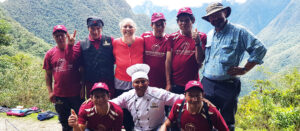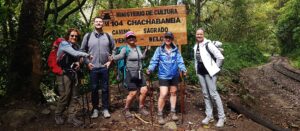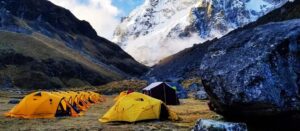Huchuy Qosqo is a short trek with spectacular views of the glaciers mountains and the Sacred Valley of the Incas, beatiful landscapes and a mysterious ancient city like Cusco.
This trek is a really nice and not too challenging option that combines nature,flora fauna original inca trails,and you will have many opportunities to learn about the local traditions as we pass through local communities.Visit and a guided tour of the little known Inca site of Huchuy Qosco. Taking you off the beaten track you get away from the all the crowds of the better known treks but still get to enjoy all the amazing things Peru has to offer. The Huchuy Qosco trek to Machu Picchu is perfect for those with a short time frame or who are looking for an easier trekking route.
What is Huchuy Qosqo?
Huchuy Qosqo is an archaeological site north of Cuzco, Peru. Its name is Quechua for “Little Cuzco.” It lies at an elevation of 3,550 meters (11,646 feet), above the 2,500-meter high town of Lamay and the Sacred Valley. The site received its name in the 20th century; previously it had been known as Kakya Qawani. Pedro de Cieza de León, in his Second Chronicle of Peru, claimed that the palaces were built by Viracocha, the Eighth Inca ruler. Amongst a large number of buildings, some stone, some adobe, is a kallanka (great hall), 40m long. Providing water to the site is an Inca built irrigation channel, lined with stones for about 800m.
The Spanish took control of Huchuy Quosqo in the 1500s, after the Manco Inca Revolution (approx. 1540) and used the site as a farm. The Quechuas constructed several small reservoirs for irrigation. During their time at Huchuy Quosqo the Spanish demolished some other Inca structures to build the larger reservoir you see today.
Below the main Huchuy Qosqo site is the recently restored store house for dried meat and crops such as corn, potatoes, quinoa, and beans. In this two story structure, you can see the historic cooling storage system known as”Graneros”
Highlights of the Huchuy Qosqo.
- Hike to Huchuy Qosqo ruins, 100 years old than Machu Picchu.
- Fantastic Huchuy Qoqso trek for families with children.
- Stunning scenery passing through a small canyon, by waterfalls and surrounded by the Sacred Valley.
- Less challenging than other treks
- A small taste of the Andes.
Weather on the trail:
Of course weather is unpredictable. Typically the dry season in Cusco is from April through October, but this does not stop raining from falling in June or the sun from coming out in December – just be prepared. No matter what month you are doing the trek, please make sure that you have rain gear that includes a waterproof jacket, pants, poncho and waterproof gloves. Many people forget about gloves, but being cold and wet makes hiking very unpleasant.
Also prepare for 4 seasons. Many of the treks through the Andes involve many micro-climates and you will need to be prepared for all seasons. Layers are always key as they are easy to adjust to the different temperatures. And evenings will always be cold, so please be prepared with a warm winter weight jacket.
Altitude in huchuy Qosqo or Litle Cusco:
As soon as people book their trip to Peru, specifically Cusco, they start wondering about altitude sickness. The air at high altitudes contains less oxygen than at sea level and forces your body to work harder to get the oxygen it needs. Over several days at high altitude, your body adjusts to the lower amount of oxygen in the air. This is why we always recommend spending at least two days in Cusco before beginning any trek. If you have more time, even better. Cusco is an amazing city with a lot to do, so you won’t be bored.
With altitude sickness, you may first feel like you have the flu or a hangover. You may have a headache, tiredness, loss of appetite, nausea or vomiting, dizziness, trouble sleeping, trouble breathing during exercise.
Most of the time, these symptoms will be mild. We always recommend easing into activity slowly, allowing your body to adjust. Drink plenty of fluids such as water or coca tea. Coca tea has been used since ancient times to help prevent altitude sickness. Leaves from the coca plant contain alkaloids which helps bring oxygen into your blood, helping your body avoid the effects of altitude sickness. Avoid drinking a lot of alcohol and coffee. They will cause you to urinate more often and become dehydrated. Avoid smoking. Smoking makes it more difficult for your body to get oxygen. Avoid sleeping pills. They may cause shallow breathing at night, making it more difficult for your body to absorb oxygen while you sleep.









